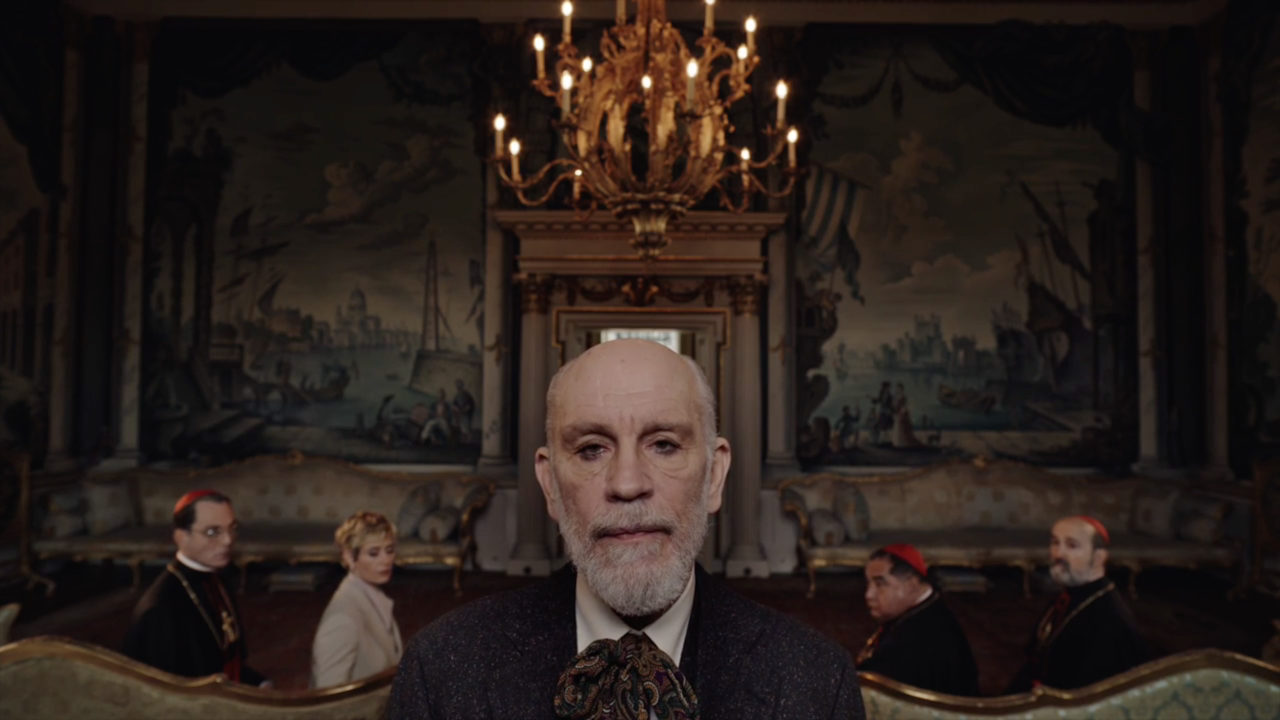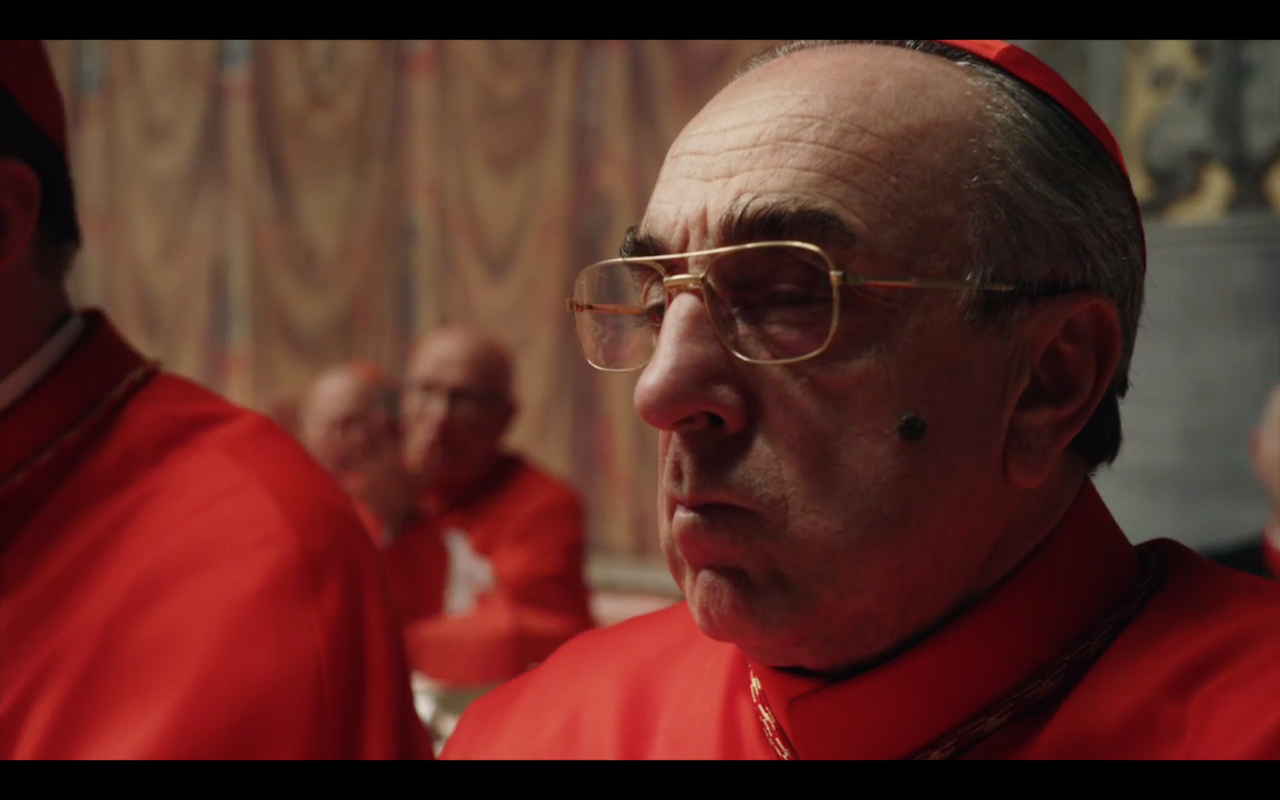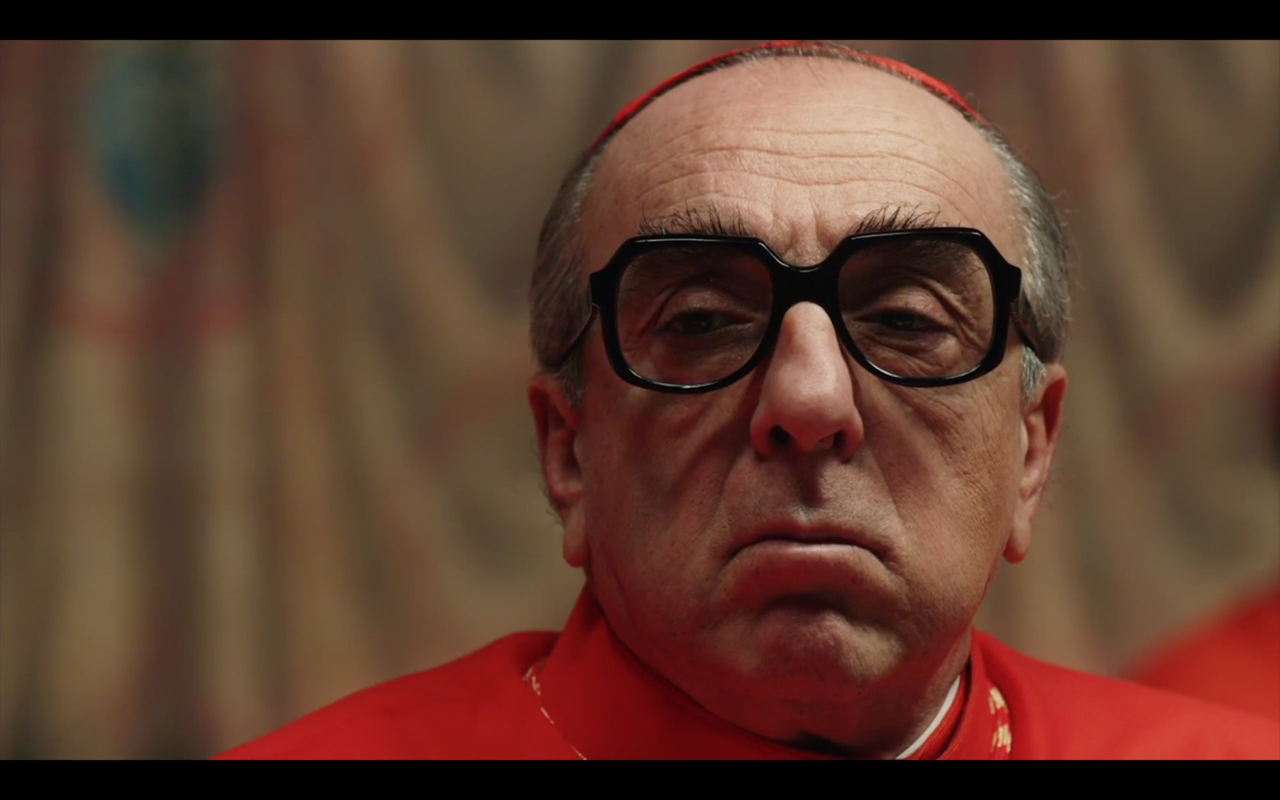Silvio Orlando is a very talented actor who does not have the looks of a leading man. But as Cardinal Voiello, the scheming influential Vatican Secretary of State from The Young Pope and its sequel season The New Pope, it doesn’t matter that Orlando has a face that, in most cinematic contexts, would be completely unremarkable. Here, his face is a plot point.
“Just look at him and picture him as pope,” says his lackey, Don Cavallo (Antonio Petrocelli, face obscured by coke-bottle glasses), to a gaggle of Voiello’s brother cardinals in an attempt to win them over to his cause. (After the controversial papacy of the extremely handsome Pius XIII, played by a now-comatose Jude Law, the cardinals are searching for someone a little more down to earth.) “Who is more ordinary than him? A stocky build, a forgettable face — except for one detail, which emphasizes its mediocrity.” That detail is a large black mole on his left cheek — the one aspect of his face that’s the product of the makeup department, not genetics.
But this, too, is a plot point. When Voiello vies to become, you guessed it, the new pope, his chief rival is one Cardinal Hernández — also played by Silvio Orlando, this time with darker glasses and sans that distinctive mole. To quickly convey Hernández’s formidable ability to network, backscratch, and politic among the Church hierarchy, all of which is enabled by his unremarkable appearance, The New Pope simply cast the actor who’d already done it for a full season. He has a face so not-nice they used it twice.
More than any other show on television today, The New Pope understands the value of unusual human faces. In addition to Orlando’s Cardinal Voiello, its core cast includes the saturnine, frog-faced Cardinal Aguirre (Ramón García); the effete and angular Cardinal Assente (Maurizio Lombardi); the beady-eyed, mononymed Vatican operative Bauer (Mark Ivanir); the soft-tempered and soft-featured Cardinal Gutiérrez (Javier Cámara); Kiruna Stamell, a little person, as the Abbess of the Vatican’s cloistered nuns. Of course, there’s the new pope himself: John Malkovich’s Sir John Brannox, his deeply lined face framed by a scraggly white beard, deep-set eyes recessed even further by generous helpings of guyliner. Creator and director Paolo Sorrentino’s closeups, particularly striking when the whole College of Cardinals is gathered together in all their red-robed splendor, make a meal out of every one of them.
The value of this casting is manifold. In cases like Voiello and his doppelgänger Hernández, these people drive the story forward simply by existing and looking the way they look. Their pointedly ordinary appearance affects their ability to garner support in the College of Cardinals, allowing them to seem unassuming and thus fly under the radar.
Their age has plot value as well. When the interim pope Francis II (a beatifically smiley Marcello Romolo) employs a group of young Franciscan monks to do his dirty work — hacking the Vatican’s banking passwords and changing the combination of its vault so only Francis can access them, physically barring cardinals from doing what they want — their relative youth and vitality compared to the men they’ve been brought aboard to thwart is self-evident. You don’t need to belabor the threat they pose to the Vatican hierarchy when you can see it in their ruddy cheeks, or in hair that’s brown instead of gray (or nonexistent).
Moreover, the unorthodoxy of The New Pope’s faces helps emphasize the relative youth and traditional sexiness of the actors on the show who actually do look like the kinds of people you’d build a television show around: Jude Law as Pope Pius XIII, whose following is developing into an idolatrous cult complete with uniform sweatshirts bearing his picture, or Cécile de France as the Vatican’s PR guru Sofia Dubois, whom Voiello refers to as “a superior woman” and whom Brannox says he wants to see every day of his papacy. You can see why people who look the way Voiello, Brannox, and company do would find these figures so fascinating, so alluring, so potentially dangerous.
Many television shows, even many great television shows, have not shared The New Pope’s generosity toward unusual-by-TV-standards faces. Mad Men, The Leftovers, Halt and Catch Fire, Mr. Robot — these prestige dramas were driven almost entirely by beautiful people. Game of Thrones, which started with a strong mix of actors, slowly whittled its cast down to a cadre of the young and the sexy.
Sometimes the socially condoned sexiness was the point, as in Mad Men’s examination of how being extraordinarily hot affected Don Draper and Joan Holloway differently based on their gender. Sometimes it was just a perk the filmmakers could adroitly exploit, like how creator Sam Esmail and his cinematographer Tod Campbell used special lenses to better capture the exceptionally round and luminous eyes of actors Rami Malek, Portia Doubleday, and Carly Chaikin.
But something is lost, too, when a cast is uniformly Hollywood-hot, and you don’t need to endure the blandly attractive casts of a network police procedural or superhero show to understand this. Critic Gretchen Felker-Martin has written persuasively about the way non-traditional casting enhanced the impact of The Sopranos, allowing us to recognize the beauty in people who look more like us. In doing so, creator David Chase opened up avenues of storytelling specific to angry men with big noses, or a full-figured woman with a binge-eating disorder. The Wire’s sprawling canvas enabled it to do something similar on an even larger scale, while Breaking Bad’s cast of ordinary looking middle-aged men and women gave weight to its commentary about the desperate lengths to which everyday people can be driven by economic dislocation and personal insecurity.
The strangeness awakens us to the sensory pleasure of looking at any human face, and contemplating the forces that animate it.
Similarly, recasting the original actors of Twin Peaks and Twin Peaks: Fire Walk with Me allowed creators David Lynch and Mark Frost to make their triumphant Twin Peaks: The Return an extended meditation on aging. You could see how decades of grief, guilt, and secret-keeping had eaten away at Sarah Palmer just by looking at actor Grace Zabriskie’s haggard, chain-smoking face, while the silver hair of Dana Ashbrook as local bad boy turned sheriff’s deputy Bobby Briggs reflected his hard-earned maturity. In one of the show’s most memorable moments, the camera simply held still and let us stare at Everett McGill’s “Big Ed” Hurley as he sat and ate a cup of soup, decades of regret etched into every line in his stony face. His face was the story, the scenery, and the spectacle of that scene.
Which brings us to the final point in favor of The New Pope’s extraordinary faces: It’s fun to look at them! Every time an ancient cardinal rolls his eyes at a feel-good quote from St. Francis, every time a reserved clergyman’s steely face melts with a pang of desire or pain, every time we simply see a collection of strange-looking dudes lined up in their cherry-red cardinal gear, we’re seeing something, well, beautiful.
The strangeness awakens us to the sensory pleasure of looking at any human face, and contemplating the forces that animate it: love, fear, desire, faith, despair, ideology — all the fundamental elements that The New Pope, like The Young Pope before it, addresses with such moving insight. The same forces animate our own faces, which likely are not movie-star or model faces either. They’re human faces. And where would a new pope be without the individual humans who comprise his flock?







